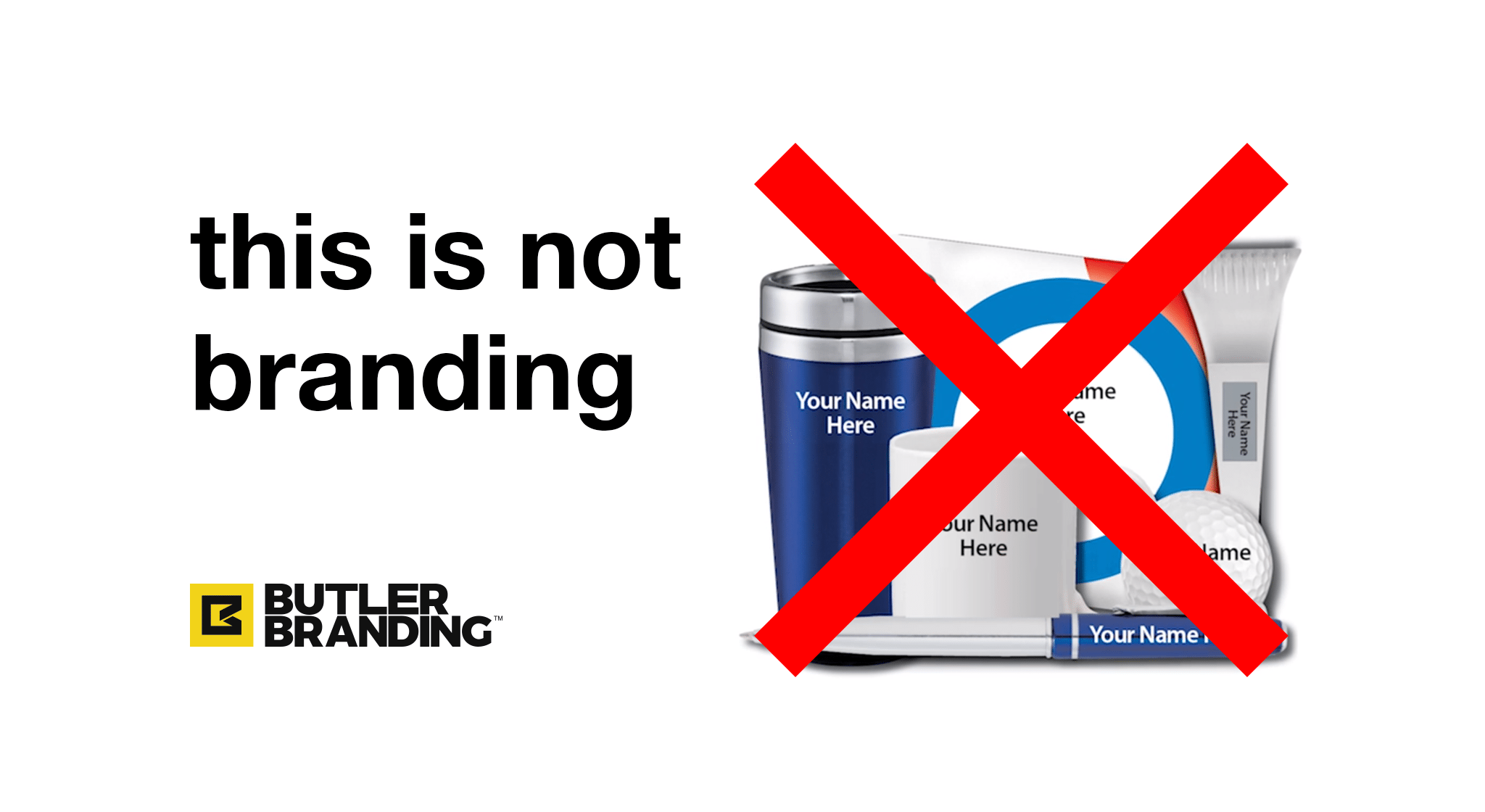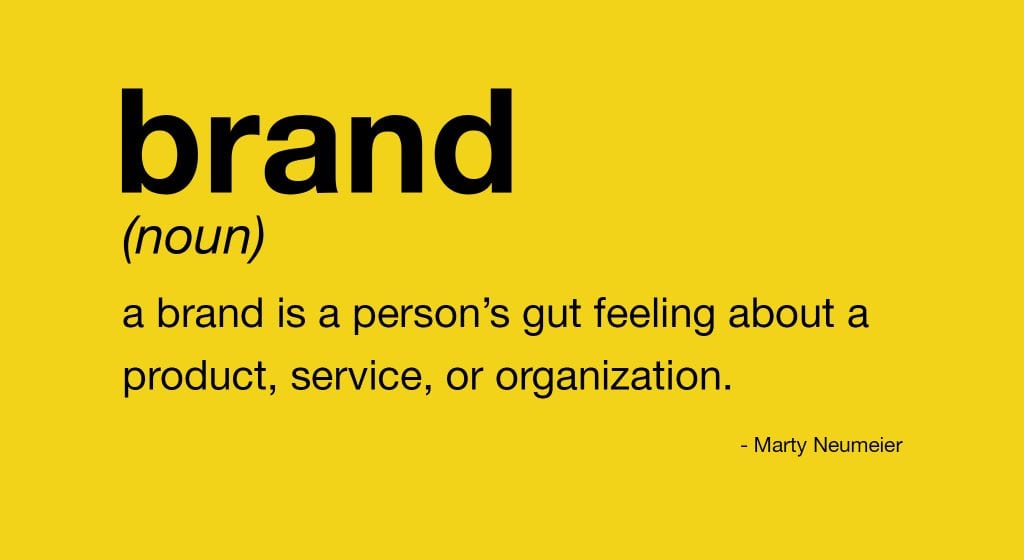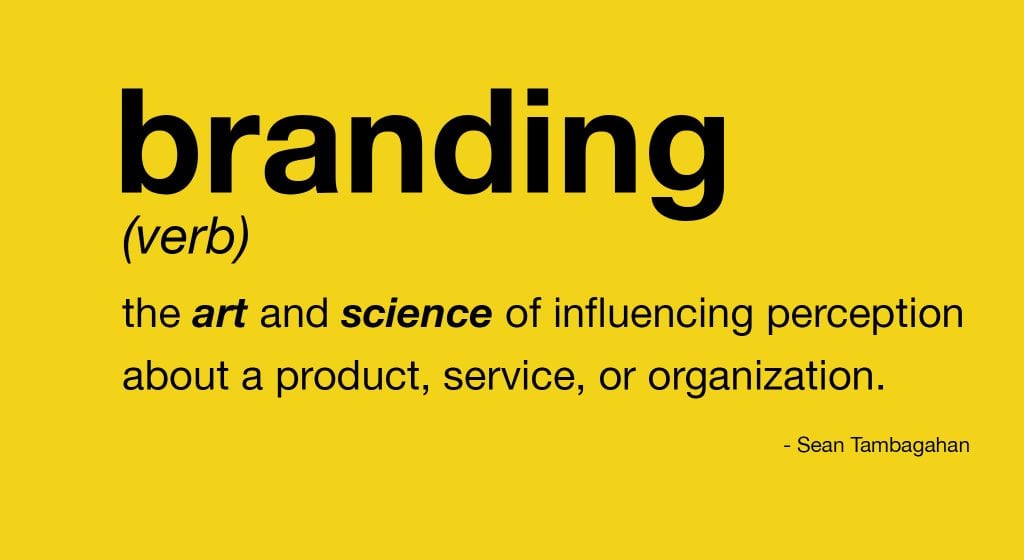If you ask 10 different companies the question, “what is branding?” you’re likely to get 10 different answers. There’s a lot of ambiguity (mixed with a little snake-oil) when it comes to the topic. The purpose of this post is to offer a simple working definition of what branding is (as well as making important distinctions as to what branding is not), clarify some of the confusion around the topic, and give some practical tips on what you can do to better brand yourself, your company, or your products/services.
The Traditional Understanding of a Brand
To “brand” something used to be synonymous with marking it with a sign of ownership (such as marking cattle with a branding iron). The term was adopted by companies as a way of differentiating one product or service from the next. However, the traditional understanding of what a brand (as a noun) is includes:
- a logo/mark
- an identity system
- a product
- a unique promise
…and a branding (as a verb) is considered:
- putting your logo on things
- creating uniquely designed marketing materials
- coming up with a clever tagline or “brand promise”
In other words, the traditional understanding of branding is what we say about our company, products or services. However, none of these things are what really differentiates one product or service from the next, and none of these are adequate definitions of branding.
The Evolved Understanding of a Brand
Most branding agencies today (or at least the good ones who know what they’re talking about) understand that your brand is not your logo, your identity system, your product, or your tagline. Rather, your brand is the public’s perception about whatever it is you’re promoting. In Marty Neumeier’s book The Brand Gap he defines a brand as “a person’s gut feeling about a product, service, or organization” (and I would include their feeling about a person, since every one of us have a personal brand). In other words, your brand is “not what you say it is; it’s what they say it is.”
“So What is Branding?”
If a brand (as a noun) is people’s gut feeling, then branding (as a verb) is the act of influencing their gut feeling. This is the role of a branding agency – to influence public perception about a person, product, service, or organization through various experiences. This is why branding is everything! It literally includes being intentional in communicating a particular message at every point of interaction a user might have with your company.
- Though branding isn’t a logo or identity design, it includes them because your logo and identity communicates a message to your users.
- Though branding isn’t marketing, it includes it because your attempts at promoting your company, products or services communicates a message to your users…
- Though branding isn’t advertising, promotions, merchandise, taglines or messaging, it includes all of these things because… well, you get the picture
Avoiding Branding Pitfalls
There are at least two major pitfalls most companies fall into when it comes to branding – ambiguity and inconsistency; the solution is intentionality and consistency.
Ambiguity VS Intentionality
When a brand is ambiguous or unclear about who they are, what they believe, what they do or what they’re like, then they fall into the pit of obscurity. There is no differentiation from the rest of the noise, and there is much room for personal interpretation. It’s like the person you frequently see at cocktail parties but never talk to – you know they exist (some brands don’t even get this far), but you know absolutely nothing about them. You can guess what they’re like, but chances are you’re wrong if you’ve never had the chance to get to know them. The more mysterious a brand is, the more likely users will inject their own understanding of what they thing the brand is like, and 9 times out of 10 it’s not the perception the brand wants to have about themselves.
On the other hand, companies who are intentional about their brand (meaning they proactively think of ways they can influence public perception) are more likely to have customers approach them already having an accurate picture painted in their mind of what doing business with them might be like.
Inconsistency VS Consistency
The other pitfall companies fall into is inconsistency. Inconsistency in brand messaging conveys confusion in a company’s self-perception. Inconsistency in the style and frequency of communication conveys instability. Inconsistency in a customer’s experience conveys the message of confusion or lack of systems and processes. However, a company that consistently says the same message, communicates the same way, and provides the same customer experience conveys the message of stability and trust. While inconsistency produces uncertainty, consistency produces trust.
So good branding is about being intentional about what promise we’re making to our users and then consistently delivering on that promise.
So, Get Started!
The first step of branding is knowing what it is, and what it isn’t. Now that that’s taken care of, the next step is to strategize a plan. While we will save that for another post (or series of posts), a simple way to create a brand strategy is to start with user profiles (a story about the type of users you plan on serving), and mapping out their journey from awareness to conversion. You can watch a video that explains how we did this for Butler, along with a free workbook and sample here: https://www.butlerbranding.com/uncategorized/how-to-build-user-profiles/







